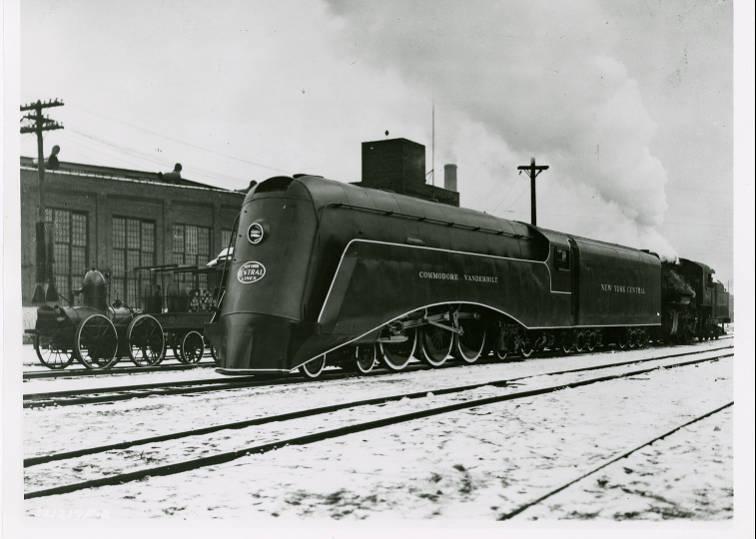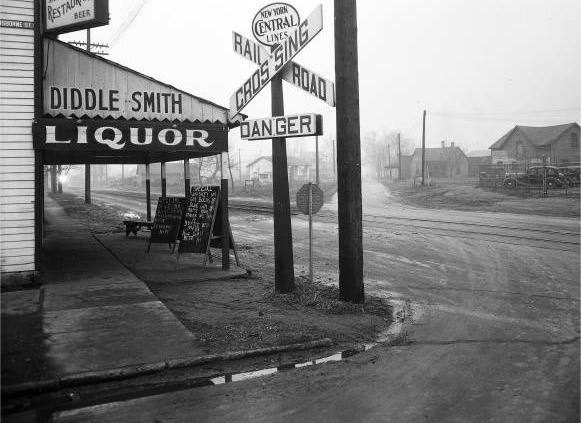Beginning in 1850, that later comprised parts of the New York Central (NYC) began operating to St. Louis and Cleveland; Chicago and Cincinnati; and Peoria, Illinois, and Springfield, Ohio. The forerunner of this system was the Indianapolis and Bellefontaine, chartered in 1848. In December 1850, it began service to Pendleton, 28 miles northeast of the capital.

Just over two years later, in January 1853, tracks reached Union City, an important junction. After mergers in the 1860s, it was extended to Galion, Ohio on a route to Cleveland, and became known as the Bee Line. After an 1889 merger, it became the Cleveland, Cincinnati, Chicago, and St. Louis (Big Four).
Meanwhile, roads reached Cincinnati and Chicago. In late 1852, service began over the Lafayette and Indianapolis Railroad (L&I), and, in November 1853, the first train, which utilized a short Ohio Riverboat connection, ran the length of the Indianapolis and Cincinnati Railroad. After its president, Henry C. Lord, failed to gain control of the L&I, he began to construct a competing line via Crawfordsville. By 1867, his threat had forced L&I to sell, and he abandoned the incomplete Crawfordsville line. Other companies extended it to Peoria, Illinois in 1869, as the Indianapolis, Bloomington, and Western.

The new road became the Indianapolis, Cincinnati, and Lafayette, and, in 1873, it was extended to Chicago via trackage rights over the Illinois Central beyond Kankakee, Illinois. Among four roads connecting Indianapolis and Chicago, it dominated the post-World War II passenger business with six daily round trips. Nevertheless, the line was abandoned beginning in 1976.
In 1867, the Indianapolis and St. Louis Railroad was incorporated to parallel what became the . It was opened in 1870 to Terre Haute and, by lease, extended to St. Louis. It also became part of the 1889 Big Four merger, and (with the one-time Bee Line) formed Conrail’s busy St. Louis-East Coast freight route.
In 1880, the Indianapolis and Ohio State Line Railroad was projected to Columbus, Ohio. Following a merger, it reached Springfield, Ohio in 1882 and leased an extension to Columbus. Following two reorganizations, the combined Peoria-Springfield routes emerged as Peoria and Eastern Railroad (P&E) in 1890. The Big Four then acquired the Springfield line and leased the Peoria road. The NYC absorbed the Big Four system after leasing it in 1930.
To serve the lines that were part of the Big Four merger, NYC built the 3 and 3/4-mile-long Big Four Yard near Avon in the late 1950s. Penn Central interests, successors to NYC, abandoned virtually the entire Springfield line in Indiana in 1976-1977. Conrail, Penn Central’s successor, abandoned the P&E from Crawfordsville west to Olin (near Covington) in 1982. Yet even in the late 1980s, the Big Four Yard moved 49 trains daily through its 55 classification tracks.
Until July 2019, Amtrak operated daily Chicago round-trip service via the Hoosier State over the tracks. This left only Amtrak’s thrice-weekly New York-Washington-Cincinnati-Chicago service over the Crawfordsville line. CSX freight trains have trackage rights and continue to use the Big Four Yard.

Help improve this entry
Contribute information, offer corrections, suggest images.
You can also recommend new entries related to this topic.

